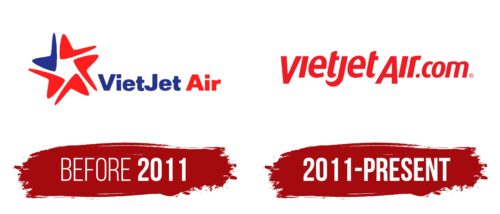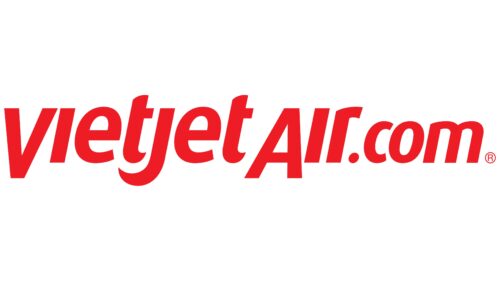VietJet Air: Brand overview
VietJet Air was founded on July 23, 2007, marking the beginning of Vietnam’s first private airline. Nguyen Thi Phuong Thao, a successful entrepreneur with a diverse business background, was the visionary behind the company. This move was bold in a country where aviation was traditionally under stringent state control. The airline was conceived as a low-cost carrier to make air travel affordable for a broad segment of the Vietnamese population.
By 2011, after years of meticulous preparation and navigating various regulatory hurdles, the airline received its commercial aviation license from the Vietnamese government. This milestone was pivotal for the company and the entire Vietnamese aviation industry, paving the way for private sector growth in this field.
Operations commenced on December 24, 2011, with the inaugural flight from Ho Chi Minh City to Hanoi. This launch marked a new chapter in Vietnam’s aviation history. The airline started with a fleet of three leased Airbus A320s, offering passengers low fares and basic service.
From 2012 to 2013, the company rapidly expanded its domestic network. The airline began servicing major Vietnamese cities, including Da Nang, Nha Trang, and Hai Phong. This period was characterized by significant passenger growth and solidifying its position in the domestic market.
In 2013, the airline took a significant step forward by initiating international flights, with Bangkok, Thailand being its first destination outside Vietnam. This expansion introduced new opportunities and signaled the beginning of its regional growth.
A landmark moment occurred in 2014 when the company placed a substantial order for 100 Airbus A320 aircraft at the Singapore Airshow. This $9.3 billion deal underscored its ambitious expansion and market consolidation plans.
2015, the airline continued its international expansion, adding flights to Singapore, Taiwan, and South Korea. This growth strengthened the company’s role as a regional player in Southeast Asia.
In 2016, the company made a notable move by going public on the Ho Chi Minh City Stock Exchange. This initial public offering (IPO) made it the first Vietnamese airline publicly traded, attracting considerable international investor interest.
By 2017, the company began establishing subsidiaries to diversify its business. VietJet Air Cargo was launched to develop freight services, and plans were set to create subsidiary airlines in other regional countries.
2018, the airline continued modernizing and expanding its fleet, receiving its first A321neo aircraft. These advanced and efficient planes enhanced operational capabilities and opened new routes.
2019, the company expanded its network by adding flights to India and Japan. The airline partnered with other carriers to bolster its international market presence.
Despite the global challenges in the aviation industry in 2020, the company demonstrated resilience. The airline adapted its operations to the new market realities, focusing on strengthening its domestic services.
Meaning and History
What is VietJet Air?
This Vietnamese low-cost airline based in Ho Chi Minh City is known for its unconventional marketing approach and rapid growth in the Southeast Asian market. The company operates a modern fleet of Airbus A320 and A321 aircraft, serving domestic and international routes. It stands out with its SkyFun program, offering in-flight entertainment activities, including lotteries and musical performances.
Before 2011
Until 2011, VietJet Air used a unique logo consisting of five airplanes arranged in such a way that they formed the image of a flower or a star. This logo concept symbolizes the synergy and collaborative effort of the company’s fleet, emphasizing their unity and coordination in achieving common goals.
Of the five airplanes featured in the logo, one is highlighted in blue, while the others are red. The blue airplane represents the affordable and standout flights offered by VietJet Air. The company is known for its low-cost tickets, represented here by blue, symbolizing affordability. In addition to the basic ticket price, the company offers various paid additional services, creating a comprehensive passenger service experience.
The red color of the airplanes and the star in the logo serve a dual purpose. They symbolize the dynamism and passion for flying that characterize the airline. The red star, a key element of the Vietnamese flag, recalls the company’s national identity and pride. Using national symbols in the logo strengthens the brand’s connection to the country’s cultural and historical roots.
The company name aligns with the logo’s color scheme: “VietJet” is written in blue letters, and “Air” is in red. This division emphasizes the uniqueness and dual nature of VietJet Air’s offering: affordability and high-quality services, appealing to a broad range of passengers.
2011 – today
The company replaced its traditional logo with its website address to enhance profitability and simplify customer interactions. This change demonstrates the brand’s dedication to modernity and accessibility for tech-savvy users. Using the web address as the primary branding element emphasizes the company’s focus on digital integration, an essential aspect in today’s world.
This approach allows easy access to information about flights and services through online platforms. The booking process becomes more intuitive and user-friendly, aligning with the company’s goals of providing seamless service. The modern design choice reflects a commitment to keeping up with contemporary trends and meeting the needs of a digital-savvy audience.
Incorporating the web address in the logo highlights the importance of technology in enhancing user experience. Customers can quickly find and navigate the company’s online services, ensuring a more efficient interaction. The shift from a traditional logo to a digital address aligns with the brand’s mission to offer convenience and modern solutions.






